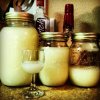I don't know about nail polish smell, but my first couple attempts using sushi rice got a very strong yeast smell after about a week. Almost like sourdough starter. They were drinkable if you held your nose, but not terrible. My latest attempt is now on week #3 using thai jasmine and it still smells petty good. Kind of like a bread dough. I'll probably strain it this weekend.
You are using an out of date browser. It may not display this or other websites correctly.
You should upgrade or use an alternative browser.
You should upgrade or use an alternative browser.
Making Traditional rice Wine. Cheap, Fun, and Different
- Thread starter sonofgrok
- Start date

Help Support Homebrew Talk - Beer, Wine, Mead, & Cider Brewing Discussion Forum:
This site may earn a commission from merchant affiliate
links, including eBay, Amazon, and others.
BlackPriest
Active Member
- Joined
- Sep 3, 2012
- Messages
- 26
- Reaction score
- 1
I don't know about nail polish smell, but my first couple attempts using sushi rice got a very strong yeast smell after about a week. Almost like sourdough starter. They were drinkable if you held your nose, but not terrible. My latest attempt is now on week #3 using thai jasmine and it still smells petty good. Kind of like a bread dough. I'll probably strain it this weekend.
Yea it's a definite nail polish remover smell, there was a discussion about it somewhere in this thread, but I'm at work and unable to search too much into what was decided. But if you were to blind fold someone and ask what it smelled like, nail polish would be the answer.
Yea it's a definite nail polish remover smell, there was a discussion about it somewhere in this thread, but I'm at work and unable to search too much into what was decided. But if you were to blind fold someone and ask what it smelled like, nail polish would be the answer.
That smell = acetone = not good. Still, what do you have to lose if you let it go and see what happens? Like an unruly child, it may just be a phase...
Ostomo517
Well-Known Member
That smell = acetone = not good. Still, what do you have to lose if you let it go and see what happens? Like an unruly child, it may just be a phase...
So just wondering, is it possible to accidentally make acetone instead of wine??
So just wondering, is it possible to accidentally make acetone instead of wine??
You can make ethyl acetate which is similar.
BlackPriest
Active Member
- Joined
- Sep 3, 2012
- Messages
- 26
- Reaction score
- 1
sonofgrok said:That smell = acetone = not good. Still, what do you have to lose if you let it go and see what happens? Like an unruly child, it may just be a phase...
That's what I thought,not good. All I have to loose is waiting five weeks for a decent batch assuming this one will turn out bad instead of trashing it, or trashing it, doing it right and having something tasty to drink in three weeks. So yea, I don't know, if the acetone smell has happened before and the wine has been salvageable then fair enough I'll sit it out, but if all the ones which have had this smell have been no good then I would prefer to trash it and start new like tomorrow.
Just not sure if any of the attempts that have the nail polish removal smell have turned out drinkable. Hope that makes sense, sorry 3/4 of the way through my Belgian 1l Tripple right now lol
saramc
Well-Known Member
BlackPriest...why do you say 5 weeks? The recommended harvest is between days 21-30. Just wondering.
From Jack Keller on ethyl acetate contamination via his page on Wine Problems @ http://winemaking.jackkeller.net/problems.asp. (I want to stress acetic acid IS NOT the same thing as vinegar, it only has a similar sour tang and is not recognized by the FDA as vinegar)....
There are three ways a wine can become contaminated and have that famous fingernail polish remover odor.
(1) Ethyl alcohol and oxygen can interact to create acetaldehyde, which can react with oxygen to create acetic acid (vinegar), which in turn can react with ethyl alcohol to create ethyl acetate. This pathway can be easily shut down by preventing oxygen exposure with the wine. Since this is impossible, one can at least minimize it to what is absolutely necessary (racking, stirring, testing, bottling). This can be done by topping up adequately, using an inert gas (such as argon -- or even CO2) to sparge the new carboy of oxygen when racking, leaving the bung on the carboy except when absolutely necessary to break the seal, and keeping sulfur dioxide levels sufficiently high that no vacant molecular interstices exist for oxygen to populate. (2) Bacterial contamination of the wine (by acetobacter) can allow the creation of acetic acid, which then combines with ethyl alcohol in the wine to form ethyl acetate. The key to prevention, again, is maintaining an aseptic level of sulfur dioxide to preclude contamination and/or prevent contamination the same way oxygen exposure is prevented.
(3) Finally, ethyl acetate contamination can be created by yeast under stress as well as by many bacteria besides acetobacter. In the first instance, maintaining an optimal temperature for the yeast strain employed, using a good mineral water in the must (if water is even used), yeast nutrient for non- grape wines, and a nitrogen source (Yeastex-61 or some other specialized nutrient) for yeast strains requiring ample nitrogen will eliminate this type of yeast stress, see Strains of Wine Yeast @ http://winemaking.jackkeller.net/strains.asp.
In the second instance, if you follow the procedures for preventing acetobacter contamination, you will prevent the others as well.
In many cases of ethyl acetate contamination, running a small aquarium pump through an airstone "blows" ethyl acetate away in just a few days. Of course, the wine usually oxidizes during this treatment but can be consumed quickly or converted into a fortified wine in which oxidation is a requirement (such as Sherry or Madeira-type wines). In more severe cases, the ethyl acetate will be blown off only to reveal excessive acetic acid. When this occurs, the wine cannot be saved.
........................................................................
I say just let your batch continue the process and see how this pans out. Of course you can apply any of the recommendations listed by Mr. Keller--may be the saving grace and I do not see any harm coming from the steps. Worst case scenario is you toss it out.
From Jack Keller on ethyl acetate contamination via his page on Wine Problems @ http://winemaking.jackkeller.net/problems.asp. (I want to stress acetic acid IS NOT the same thing as vinegar, it only has a similar sour tang and is not recognized by the FDA as vinegar)....
There are three ways a wine can become contaminated and have that famous fingernail polish remover odor.
(1) Ethyl alcohol and oxygen can interact to create acetaldehyde, which can react with oxygen to create acetic acid (vinegar), which in turn can react with ethyl alcohol to create ethyl acetate. This pathway can be easily shut down by preventing oxygen exposure with the wine. Since this is impossible, one can at least minimize it to what is absolutely necessary (racking, stirring, testing, bottling). This can be done by topping up adequately, using an inert gas (such as argon -- or even CO2) to sparge the new carboy of oxygen when racking, leaving the bung on the carboy except when absolutely necessary to break the seal, and keeping sulfur dioxide levels sufficiently high that no vacant molecular interstices exist for oxygen to populate. (2) Bacterial contamination of the wine (by acetobacter) can allow the creation of acetic acid, which then combines with ethyl alcohol in the wine to form ethyl acetate. The key to prevention, again, is maintaining an aseptic level of sulfur dioxide to preclude contamination and/or prevent contamination the same way oxygen exposure is prevented.
(3) Finally, ethyl acetate contamination can be created by yeast under stress as well as by many bacteria besides acetobacter. In the first instance, maintaining an optimal temperature for the yeast strain employed, using a good mineral water in the must (if water is even used), yeast nutrient for non- grape wines, and a nitrogen source (Yeastex-61 or some other specialized nutrient) for yeast strains requiring ample nitrogen will eliminate this type of yeast stress, see Strains of Wine Yeast @ http://winemaking.jackkeller.net/strains.asp.
In the second instance, if you follow the procedures for preventing acetobacter contamination, you will prevent the others as well.
In many cases of ethyl acetate contamination, running a small aquarium pump through an airstone "blows" ethyl acetate away in just a few days. Of course, the wine usually oxidizes during this treatment but can be consumed quickly or converted into a fortified wine in which oxidation is a requirement (such as Sherry or Madeira-type wines). In more severe cases, the ethyl acetate will be blown off only to reveal excessive acetic acid. When this occurs, the wine cannot be saved.
........................................................................
I say just let your batch continue the process and see how this pans out. Of course you can apply any of the recommendations listed by Mr. Keller--may be the saving grace and I do not see any harm coming from the steps. Worst case scenario is you toss it out.
Ostomo517
Well-Known Member
I wont quote that huge deal, but thanks sara you rock!
I am going to go ahead and re-recommend people use Thai jasmine rice at least for their first batch. It is the only rice I have ever used for this and based on feedback through the thread it seems like the highest success rate. Most of the troubled batches I see here are sushi rice.
This would fit right in with the " more water = more opportunity for trouble" hypothesis.
This would fit right in with the " more water = more opportunity for trouble" hypothesis.
I just started my batch last night. 5 cups of jasmine rice, 4 yeast balls.
I rinsed the rice until the water was clear and then followed sonofgrok's suggestion to fill the water one finger knuckle's length above the rice level. The rice cooker took about 15 minutes to cook at which point I scooped the rice out onto a pan to cool before mixing in with the crushed yeast balls. I sanitized and hot water rinsed everything that came into contact with the rice. I dipped the piece of cheesecloth into boiling water, and then let it dry (a little, it was still damp when I put it on the jar).
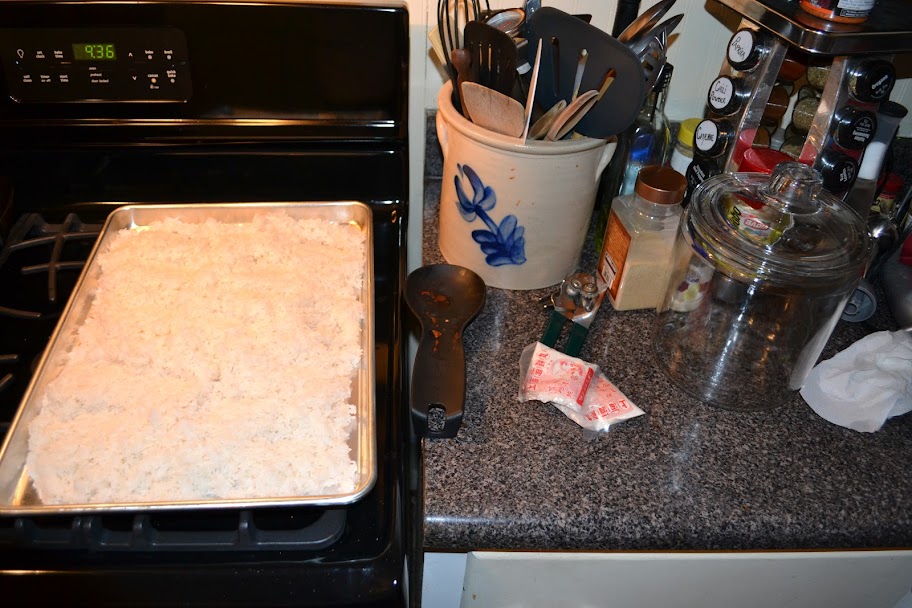
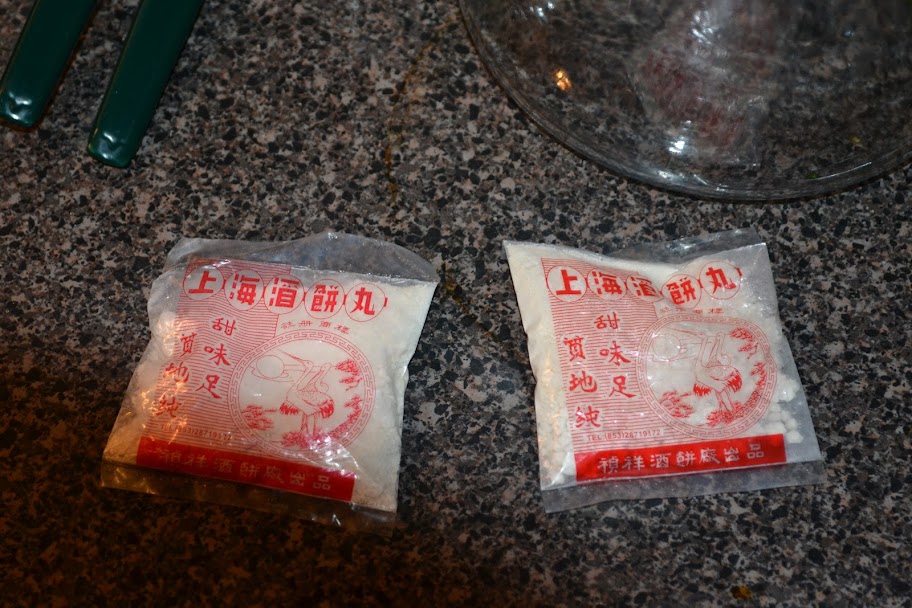
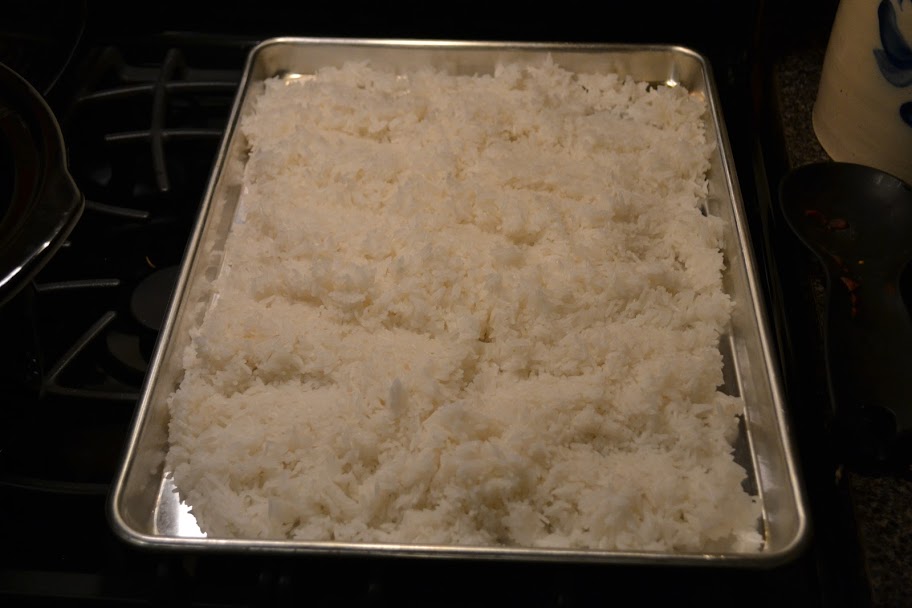
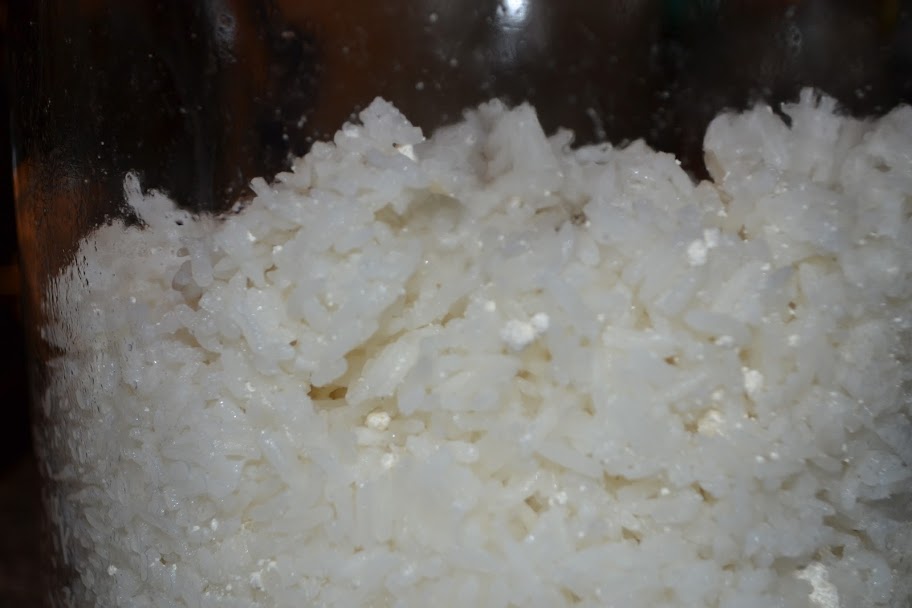
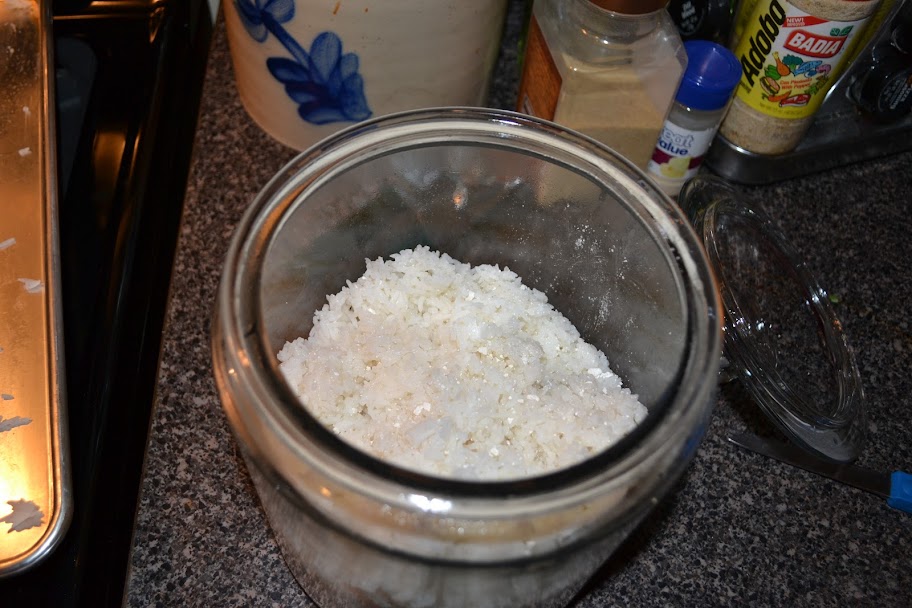
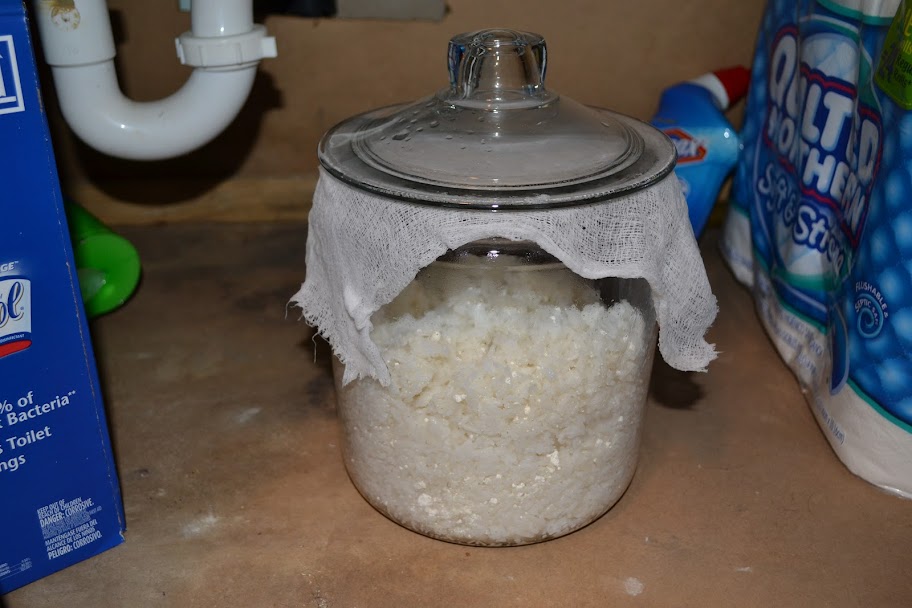
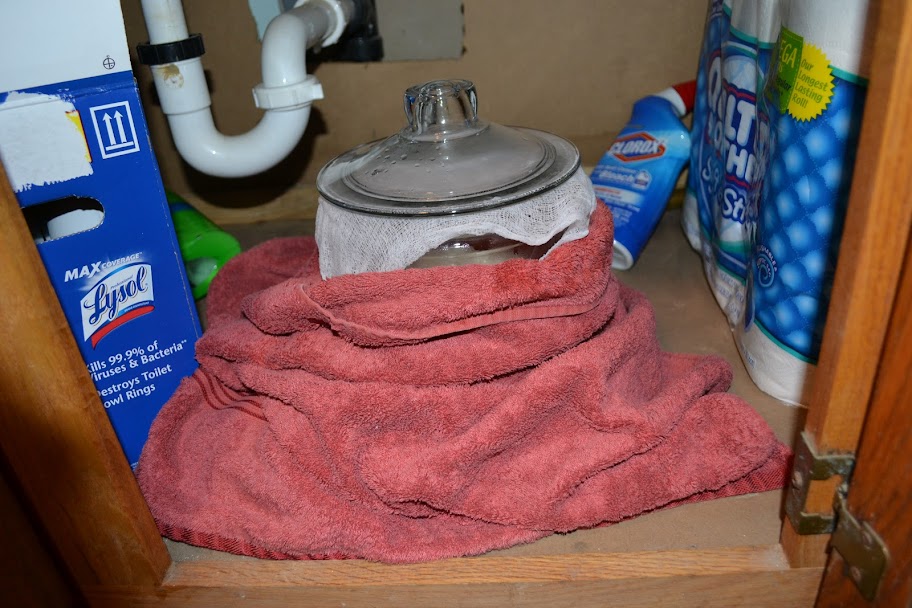
I rinsed the rice until the water was clear and then followed sonofgrok's suggestion to fill the water one finger knuckle's length above the rice level. The rice cooker took about 15 minutes to cook at which point I scooped the rice out onto a pan to cool before mixing in with the crushed yeast balls. I sanitized and hot water rinsed everything that came into contact with the rice. I dipped the piece of cheesecloth into boiling water, and then let it dry (a little, it was still damp when I put it on the jar).







BlackPriest
Active Member
- Joined
- Sep 3, 2012
- Messages
- 26
- Reaction score
- 1
Thanks for the info,
What I meant by 5 weeks was waiting this one out for another two, plus starting a new one which would take another 3, = 5 weeks till drinking tasty rice wine. Rereading what I wrote I didn't do a very good job of explaining that, blasted tasty tripple lol.
I guess what I was looking for was for somone to post saying that they had a batch that had the nail polish remover smell and that it didn't get better and was disposed of.
Oh well, I think I'm just going to trash it, use Thai jasmin rice as suggested and much less water.
What I meant by 5 weeks was waiting this one out for another two, plus starting a new one which would take another 3, = 5 weeks till drinking tasty rice wine. Rereading what I wrote I didn't do a very good job of explaining that, blasted tasty tripple lol.
I guess what I was looking for was for somone to post saying that they had a batch that had the nail polish remover smell and that it didn't get better and was disposed of.
Oh well, I think I'm just going to trash it, use Thai jasmin rice as suggested and much less water.
Just curious, how far along does this look? And what is the consensus of using more yeast? I used six yeast balls on this experiment and around 5-6 cups of cooked rice. Smells yeasty, but good! Started on 2/24/2013.




SFGiantsFan925
Well-Known Member
^ That was started 3 days ago?? Wow, not sure how you already have that much liquid in there. As stated before in this thread, regardless of how it sits, I think its best to let it go the full 21 days at least to clean things up. Kinda like a primary and beer.
WesleyS
Well-Known Member
- Joined
- May 1, 2012
- Messages
- 13,496
- Reaction score
- 4,217
WesleyS said:Well, I just harvested my wine. I started it on 2/7/13. This batch was 5 cups (dry before cooking) Thai jasmine rice.
The end product is dry and tart, not undrinkable but will benefit from flavoring. Once I flavor/sweeten it I'll bottle and pasteurize it.
About how much liquid did you get from 5 cups of rice
techbrewie
Well-Known Member
So I had a couple packets of super kleer laying around. Mine when from a gross milky looking white to a crystal clear sweet smelling yellow. Not sure if removing all of that stuff was good or bad. I backsweetened with frozen blackberries. Gonna open it up this weekend and give it a taste. I bought 2 1 gallon glass jars and from now on will have 2 gallons of cooked rice fermenting at all times. 
WesleyS
Well-Known Member
- Joined
- May 1, 2012
- Messages
- 13,496
- Reaction score
- 4,217
HopHeaven said:About how much liquid did you get from 5 cups of rice
I haven't measured it out exactly yet, but as you can see in the picture, I filled a quart jar, a pint jar, and a little bit in the second pint jar. So, if I had to guess I'd say about 42 oz. It's actually a little more than I was expecting.
^ That was started 3 days ago?? Wow, not sure how you already have that much liquid in there. As stated before in this thread, regardless of how it sits, I think its best to let it go the full 21 days at least to clean things up. Kinda like a primary and beer.
I know that I kinda overused the yeast, but since the ingredients are so cheap for this I decided to to a super ferment and see where it goes. I did screw up and boil the rice, but I drained it and put the (somewhat pasty) rice into the container a little at a time and sprinkled the crushed yeast over the rice in layers, then mashed everything with my (sterilized) hands (what a mess). I plan to actually steam the rice next time. I might have some extra water in the container since I boiled it, but there was hardly none in the bottom for the first 12 hours until the yellowish cloudy wine started forming. I'm going to let it keep going and see what happens.
bottlebomber
Well-Known Member
SFGiantsFan925 said:^ That was started 3 days ago?? Wow, not sure how you already have that much liquid in there. As stated before in this thread, regardless of how it sits, I think its best to let it go the full 21 days at least to clean things up. Kinda like a primary and beer.
Yes.. Mine put off that much liquid after three days, but it was sweet, watery and weak tasting. It definitely uses the full 2 weeks.
Yes.. Mine put off that much liquid after three days, but it was sweet, watery and weak tasting. It definitely uses the full 2 weeks.
This is good to know, thanks for sharing.
bottlebomber
Well-Known Member
3 weeks I meant.
WesleyS
Well-Known Member
- Joined
- May 1, 2012
- Messages
- 13,496
- Reaction score
- 4,217
So here's an update since my last post earlier tonight. After collecting the wine, I made a simple syrup of 1 cup each of water and sugar and added some frozen mixed berries. I let all that simmer for a bit and smashed the berries as they became tender. Then I strained the fruit syrup and added it all to the wine and mixed well. I ended up with about 2 quarts of wine total after being cut with the fruit syrup.

They just went in the pot for pasteurization.

They just went in the pot for pasteurization.
So my yeast balls came in the mail today. Unfortunately I'm going on vacation for the next 10 days starting tomorrow. While I'd like to watch and document my first batch, do you guys think its ok to start this tonight and leave it unsupervised for 10 days?
WesleyS
Well-Known Member
- Joined
- May 1, 2012
- Messages
- 13,496
- Reaction score
- 4,217
HopHeaven said:So my yeast balls came in the mail today. Unfortunately I'm going on vacation for the next 10 days starting tomorrow. While I'd like to watch and document my first batch, do you guys think its ok to start this tonight and leave it unsupervised for 10 days?
I personally wouldn't see a problem with that.
So my yeast balls came in the mail today. Unfortunately I'm going on vacation for the next 10 days starting tomorrow. While I'd like to watch and document my first batch, do you guys think its ok to start this tonight and leave it unsupervised for 10 days?
Supervision is the bane of fermentation my friend. The more you poke and prod it the more likely you are to mess it up. Start your batch and go on your vacation!
Ostomo517
Well-Known Member
So my yeast balls came in the mail today. Unfortunately I'm going on vacation for the next 10 days starting tomorrow. While I'd like to watch and document my first batch, do you guys think its ok to start this tonight and leave it unsupervised for 10 days?
Just make sure it knows its not supposed to leave the house and shouldnt tell anyone its home alone
Ostomo517 said:Just make sure it knows its not supposed to leave the house and shouldnt tell anyone its home alone
I just don't trust it, it thinks it can just do whatever it wants every time I have my back turned.
sonofgrok said:Supervision is the bane of fermentation my friend. The more you poke and prod it the more likely you are to mess it up. Start your batch and go on your vacation!
I do love going away and coming back days later and seeing the progress that has been made. It goes by so much slower when you check on it
Ostomo517 said:Just make sure it knows its not supposed to leave the house and shouldnt tell anyone its home alone
I just don't trust it, it thinks it can just do whatever it wants every time I have my back turned.
sonofgrok said:Supervision is the bane of fermentation my friend. The more you poke and prod it the more likely you are to mess it up. Start your batch and go on your vacation!
I do love going away and coming back days later and seeing the progress that has been made. It goes by so much slower when you check on it
I use US cups... roughly
I searched this thread and I'm sure it's been discussed but I couldn't bring myself to go through all ninety something pages. I'm on my third batch and am having some trouble straining the final product. The last batch I ended up with a few chunks when I bottled. I tried a hop sack at first but that held too much liquid and was a pain to get it all strained. I can't recall exactly what I used the second time but it didn't get all the chunks out. How do you all go about straining?
BlackPriest
Active Member
- Joined
- Sep 3, 2012
- Messages
- 26
- Reaction score
- 1
I've been reading this thread too much and have confused my self. So my first batch now being properly flushed down the toilet I'm ready to attempt number two. I don't have a rice cooker, can someone please share a success story on what they did? For example I'm going to use four cups of dry jasmine rice, soak or not soak? How much water to add 1 water per cup rice, 1.25? Boil for how long? Sorry for asking what has probably been covered a hundred times, but every time I find an answer I find someone who did it a different way and I lost track of whos worked and who's didn't.
Cheers all.
Cheers all.
I searched this thread and I'm sure it's been discussed but I couldn't bring myself to go through all ninety something pages. I'm on my third batch and am having some trouble straining the final product. The last batch I ended up with a few chunks when I bottled. I tried a hop sack at first but that held too much liquid and was a pain to get it all strained. I can't recall exactly what I used the second time but it didn't get all the chunks out. How do you all go about straining?
I have gone to using a nylon bag and a pitcher.
saramc
Well-Known Member
Rinse the dry rice until water runs clear, then soak the rice in water until the volume increases by 1/3, then strain and rinse rice until runs clear again. For jasmine rice... add 1.5 times the amount of original dry rice (the rice has absorbed some water during soaking)...prepare by boiling or steaming. You want the rice cooked so the external grain is soft yet the center is lightly firm. You do not want rice mush.I've been reading this thread too much and have confused my self. So my first batch now being properly flushed down the toilet I'm ready to attempt number two. I don't have a rice cooker, can someone please share a success story on what they did? For example I'm going to use four cups of dry jasmine rice, soak or not soak? How much water to add 1 water per cup rice, 1.25? Boil for how long? Sorry for asking what has probably been covered a hundred times, but every time I find an answer I find someone who did it a different way and I lost track of whos worked and who's didn't.
Cheers all.
This may help:
1. Place in a heavy bottomed sauce pan. You should choose a pan which allows at least 1" of dry rice to fill bottom of pan.
2. Bring the water to a boil, add soaked/rinsed rice and stir once with a fork. Reduce the heat to a low simmer and cover the pan with lid.
3. Leave at low simmer for 25 minutes and do not remove the lid or stir, no peeking.
4. At the end of 25 minutes, remove from heat source & allow to stand, still covered, don't peek, for 10 - 15 minutes.
5. You can now remove the lid and fluff the rice with a fork and transfer to cookie sheet so it can start cooling down for yeast innoculation. Turn the rice periodically to help ensure consistent cooling.
If you absolutely want to watch the rice cook, add 2x the amount of water compared to original dry rice amount, and simply do not apply lid. The rice will cook at a low simmer as outlined above but you can watch it, continue with steps 4&5 of course.
I searched this thread and I'm sure it's been discussed but I couldn't bring myself to go through all ninety something pages. I'm on my third batch and am having some trouble straining the final product. The last batch I ended up with a few chunks when I bottled. I tried a hop sack at first but that held too much liquid and was a pain to get it all strained. I can't recall exactly what I used the second time but it didn't get all the chunks out. How do you all go about straining?
My batches are small, just 4-6 cups of dry rice, and I have had success using a gallon sized medium mesh nylon straining bag tucked inside a fine mesh nylon straining bag. The bags are placed inside a 2-3 gallon bucket and secured with bungee type cord. As the rice volume compacts I simply roll up the sides of the bag so the straining fermented rice mass is further from the bottom of the bucket. I choose NOT to squeeze this first run, but I later switch to a different container like a one gallon wide mouth pitcher/jar and use that to collect the pressed/squeezed 'rice beer'. I just stash the first run in cold spot overnight and by the next morning it is pretty dry and compacted. I may check it in a few hours so I can roll up the material, raise the level of the dripping mass. Works for me and actually takes little effort.
I had my best results from a white dishcloth I also use for straining curd from whey when making cheese.I searched this thread and I'm sure it's been discussed but I couldn't bring myself to go through all ninety something pages. I'm on my third batch and am having some trouble straining the final product. The last batch I ended up with a few chunks when I bottled. I tried a hop sack at first but that held too much liquid and was a pain to get it all strained. I can't recall exactly what I used the second time but it didn't get all the chunks out. How do you all go about straining?
SFGiantsFan925
Well-Known Member
Holy Acetone Batman!!!!
Jeez. So, I have 3 jars with my rice working away. 1 jasmine, 1 Sweet, and 1 Mix. They are large mason jars. Everything was prepared as the thread stated, and everything was disinfected with Starsan.
Well, I had a small jar of the "leftover" rice that I had mixed with yeast balls, and it was of the mixed sweet/ jasmine rice. I took off the top and towel and HOLY COW!! POW! SMACK! Its like someone dumped nail polish remover into my nose. i couldnt dump it out fast enough. It was my "test" part of the leftover rice that I really didnt care about.
Well, after this if course, I had to smell the others. All 3 other jars had a degree of acetone smell. The sweet rice being the strongest, with the Jasmine and the combo being pretty strong. All 3 were nothing like the small jar, but its there for sure.
I quickly dumped out the small jar, filling the kitchen with a super strong acetone smell. Horrible.
I am going to let the 3 larger jars go full term and see what happens. But if they have any type of acetone smell I probably will dump them.
Anyone know if there is any harm in drinking something with that smell?? I read the previous post that has super great info about HOW it gets there, but not sure if its toxic. Any help would be great. The wife and I were both pretty disappointed that they stink like this. We will get it, just takes a few more tries I guess.
Jeez. So, I have 3 jars with my rice working away. 1 jasmine, 1 Sweet, and 1 Mix. They are large mason jars. Everything was prepared as the thread stated, and everything was disinfected with Starsan.
Well, I had a small jar of the "leftover" rice that I had mixed with yeast balls, and it was of the mixed sweet/ jasmine rice. I took off the top and towel and HOLY COW!! POW! SMACK! Its like someone dumped nail polish remover into my nose. i couldnt dump it out fast enough. It was my "test" part of the leftover rice that I really didnt care about.
Well, after this if course, I had to smell the others. All 3 other jars had a degree of acetone smell. The sweet rice being the strongest, with the Jasmine and the combo being pretty strong. All 3 were nothing like the small jar, but its there for sure.
I quickly dumped out the small jar, filling the kitchen with a super strong acetone smell. Horrible.
I am going to let the 3 larger jars go full term and see what happens. But if they have any type of acetone smell I probably will dump them.
Anyone know if there is any harm in drinking something with that smell?? I read the previous post that has super great info about HOW it gets there, but not sure if its toxic. Any help would be great. The wife and I were both pretty disappointed that they stink like this. We will get it, just takes a few more tries I guess.
Xantus954
Well-Known Member
I've read through the whole thread over the past few days and noticed there are a lot of people messing with their rice wine way to much. Set it and forget it until its time to rack your wine off the what's left of the rice. Every time you open your jars to smell, mix or whatever else your doing your increasing your chances of infection and introducing oxygen and whatever else happens to be floating in the air into your fermenter and that's never a good thing.
Patience people and remember RDWHAHB!
Patience people and remember RDWHAHB!
SFGiantsFan925
Well-Known Member
I've read through the whole thread over the past few days and noticed there are a lot of people messing with their rice wine way to much. Set it and forget it until its time to rack your wine off the what's left of the rice. Every time you open your jars to smell, mix or whatever else your doing your increasing your chances of infection and introducing oxygen and whatever else happens to be floating in the air into your fermenter and that's never a good thing.
Patience people and remember RDWHAHB!
Pretty sure that is exactly what I was thinking. If they are giving off quite a bit of acetone smell, I am going to start over. What is a $6 batch of rice worth?? Haha. Its worth it to do it right.
A big question for me, is should this be in a dark or light area?? They are sitting in a very light area, and not sure if that has contributed to the acetone smell. Should I park these (or the new batch) in a closet/ dark area???
Spinrathen
Well-Known Member
- Joined
- Jan 27, 2013
- Messages
- 145
- Reaction score
- 5
I've been reading this thread too much and have confused my self. So my first batch now being properly flushed down the toilet I'm ready to attempt number two. I don't have a rice cooker, can someone please share a success story on what they did? For example I'm going to use four cups of dry jasmine rice, soak or not soak? How much water to add 1 water per cup rice, 1.25? Boil for how long? Sorry for asking what has probably been covered a hundred times, but every time I find an answer I find someone who did it a different way and I lost track of whos worked and who's didn't.
Cheers all.
Just to add to what's above me that is very good advice: Myself and others in this thread have had good success with lower water ratios 1:1 to 1:1.5 max. A good portion of people who have had trouble were using 1:1.5 or more.
Similar threads
- Replies
- 0
- Views
- 531
- Replies
- 0
- Views
- 486
- Replies
- 16
- Views
- 799
- Replies
- 11
- Views
- 1K
- Replies
- 110
- Views
- 4K

